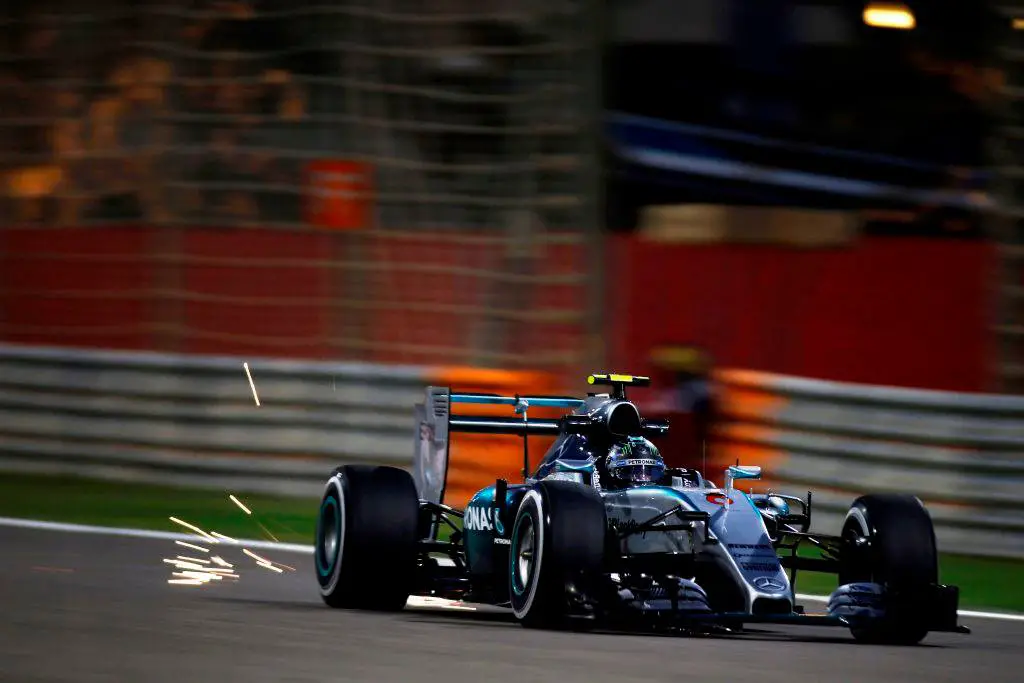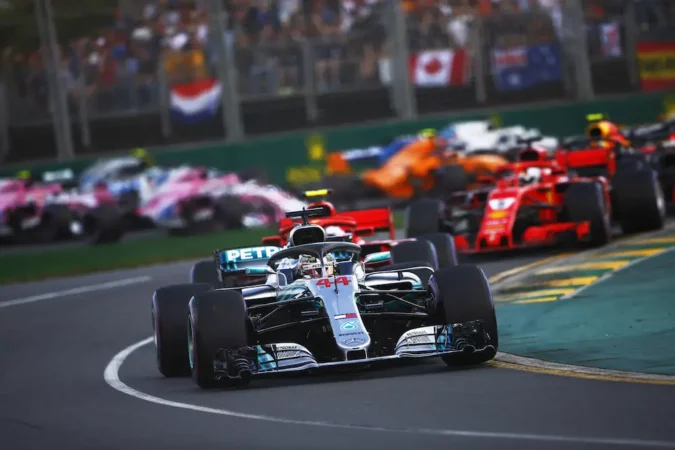The traditional argument between Indy Car vs Formula 1 has long polarized racing enthusiasts worldwide. These two open-wheel racing series give diverse perspectives on the sport at their core, each with special advantages and difficulties. Those nuances are typical when comparing between different types of race cars.
It doesn’t matter whether you like the technical finesse and engineering prowess of Formula 1 or the unrestrained speed and excitement of IndyCar. There is no disputing the intensity and passion these two series elicit in their supporters.
The diverse cultures and histories influencing each series are among the most fascinating components of the dispute between IndyCar and Formula 1. With a heritage that dates back to the early years of the sport and a concentration on close, thrilling racing that places a premium on driver talent and bravery, IndyCar is firmly embedded in American racing culture.
Formula 1, on the other hand, has roots in European motorsport and is a more internationally oriented series. It has a reputation for pushing the boundaries of engineering and technology to achieve ever-higher levels of speed and performance… Far beyond the average horsepower of a car or even the most powerful engine in a production car.
- Overview
- What is Formula 1?
- What is Indy Car?
- IndyCar vs Formula 1
- About Indy 500
- What is the Point System?
- Cost of F1 Car
- Steering Wheel of IndyCar
- Top Speed of Indy Car
Motorsports Overview
The first scheduled competition between the two cars occurred on April 28th, 1887. The eight-mile journey created a lot of tension. Despite being wholly illegal, the event marked the beginning of automobile races. The first automobile race in history, from Paris to Rouen, was arranged by the Parisian publication Le Petit Journal in 1894.
Sixty-nine specially constructed vehicles competed in the 50km qualifying race. Which would choose the competitors for the 127km race from Paris to Rouen, a city in northern France. People required a consistent location to view the races due to their rising popularity, and Australia was able to meet this need.
Australia unveiled the Aspendale Racecourse, a pear-shaped, nearly mile-long racetrack, in 1906. But it soon became clear that specialist sports cars were necessary since there was always a chance that rivals would illegally modify their cars to gain an advantage. If you have one of the easiest cars to mod, it can be pretty easy to learn how to make my car fast.
Sportscar racing became a unique style of racing with its own historical events and tracks after World War 2. After 1953, improvements to the vehicles for safety and performance were permitted, and by the middle of the 1960s, they were purpose-built race cars with a body that looked stock.
Formula 1
A Formula One car is a single-seat, open-cockpit racing vehicle designed exclusively for use in Formula One races (also known as Grands Prix). It alludes to the FIA rules that the vehicles used by the competitors must adhere to.
According to the FIA, only “1” rated circuits can host Formula 1 races. The starting grid is typically located along a straight section of the track. The rest of the track’s configuration is determined by where the Grand Prix will take place, but it typically runs clockwise. Next to the starting grid is the pit lane, where drivers go for maintenance or to withdraw from the race.
The Grand Prix is over when a driver completes the last 189.5 miles (or 305 km), which must be done in less than two hours. The F1 races are very popular and are televised live on television. In reality, approximately 600 million people watched the events worldwide in 2008.
A suggestion was made at the 2018 Bahrain Grand Prix to help the Grands Prix in several ways. The proposal outlined five major themes, including streamlining sport governance, emphasizing cost-effectiveness, keeping the sport’s connection to road cars, and encouraging new manufacturers to compete in the championship while allowing them to do so.
Indy Car vs Formula 1: Formula 1 Horsepower
A Formula 1 car’s horsepower has changed over the years due to modifications to the rules, advancements in engine technology, and other considerations. The turbocharged V6 hybrid powertrains used in Formula 1 today, which debuted in 2014, have a race-ready output of about 950 horsepower (710 kW).
The F1 regulations impose a maximum fuel flow rate of 100 kg/hour and a maximum engine speed of 15,000 rpm, limiting the engines’ precise output. The engines use a combination of cutting-edge technology, such as turbocharging, direct fuel injection, and energy recovery systems that capture heat and kinetic energy from the car’s brakes and exhaust gases to provide the most power possible while staying within these restrictions.
One of the essential elements that enable Formula 1 cars to accelerate and reach remarkable speeds on the track is their tremendous horsepower. Which also significantly contributes to the strenuous physical demands placed on the drivers throughout a race.
IndyCar
The IndyCar series is the other well-liked category of a racing vehicle. The Indy 500’s premier series, which only competes on oval circuits, is referred to by this term. The car should weigh no less than 730 to 740 kg (not including fuel, the driver, or any other materials). These cars’ f1 top speed of 240 mph is made possible by the use of lightweight materials, which also increase their speed.
Even while IndyCar vehicles are not quite as speedy as F1 vehicles, they are still very swift. The top speed of an IndyCar is approximately 240 mph, which is still quicker than the majority of other racing divisions worldwide. For a more detailed comparison, check out our guide on how fast do Formula 1 cars go.
Although overtaking and close racing is crucial components of the series. The emphasis in IndyCar is more on the driver’s skill and talent than on raw speed. However, one of the main problems with Indy Cars has always been driver safety.
Indy Car vs Formula 1
It’s crucial to realize that IndyCar vs F1 is used for largely different races before we compare them.
Indy Car Vs F1 Car #1 – Manufacturing
In IndyCar, there are two fixed engine suppliers (Honda and Chevrolet) and one chassis (Dallara). So each team picks what it buys, obviously making it cheaper and resulting in dozens of vehicles with the same characteristics on the track.
In Formula 1, each team is required by regulation to create their own cars. They are only permitted to obtain engines and transmissions; the rest is on their own, so each car is different.
Indy Car Vs F1 Car #2 – Nature
IndyCars are designed for continuous speeds like ovals, whereas Formula 1 cars are designed for mixed circuits. Meaning they are fast on the straight, accelerate quickly, and can also handle curves at higher speeds due to their aerodynamics.
Because of this, when IndyCar races on circuits, their aerodynamics force them to brake earlier and harder before cornering and they have a tougher time accelerating. An F1 can accelerate from 0 to 200 in about 4 seconds, but an IndyCar needs double that time.
Indy Car Vs F1 Car #3 – Strategy
In IndyCar, there are only two aerodynamic packages, one for the circuit and one for the ovals. While in the race, you may change tires and even refuel. And which creates more inventive strategies and equality between teams. In Formula 1, because each circuit is unique, the teams choose the aerodynamics according to the track.
And once in the race, they can only change tires. As if that weren’t enough, IndyCar uses the Push to Pass button. which temporarily adds up to 40 additional horsepower, to overtake competitors, while Formula 1 has the DRS system, which retracts the back wing.
Indy Car Vs F1 Car #4 – Engines
IndyCar employs 2.2-liter V6 biturbo engines with 550–750 horsepower, which is why it does not accelerate as quickly as Formula 1. Which uses 1.6-liter V6 turbocharged hybrid engines with an output of 800–1,000 horsepower swift but with a higher top speed.
Indy Car Vs F1 Car #5 – Security
In addition to the obvious safety precautions, Formula 1 drivers have the halo over the cockpit to protect their heads, while IndyCar also has an aero-screen to shield the driver from flying debris.
Indy Car Vs F1 Car #6 – Fuel
IndyCar has long used a blend of 85% ethanol and 15% gasoline. Which speeds up combustion but has the drawback that the flame is undetectable in the event of a fire. In Formula 1, high-octane gasoline is utilized 99 percent of the time, with the remaining 1 percent being added to the team’s liking.
IndyCar seeks to keep a certain amount of “purity” to simply outperform the competition. Even though the times have caught up with it and hybrid engines will be a part of its toolkit started in 2021. Formula 1 is the cradle of automotive technology. In fact, the sport has contributed to several breakthroughs in the industry.
Indy 500 Cars
The Indianapolis 500, usually called the Indy 500, is a well-known auto race that takes place every year at the Indianapolis Motor Speedway in Indiana, USA. Open-wheel, single-seat race vehicles that are specifically designed for the Indy 500 are used in the competition. The Indy 500 cars are specifically created for this fast-paced race with an emphasis on speed, handling, and safety.
They are single-seat, open-wheel race cars with lightweight, aerodynamic designs that enable them to travel at great speeds while retaining stability and control on the track.
According to configuration and tune, IndyCar engine 500 cars normally have 2.2-liter twin-turbocharged V-6 engines with a horsepower range of 550–700. Special features like direct fuel injection, variable valve timing, and specialized exhaust systems enable these engines to offer maximum power and efficiency since they are finely tuned and performance-optimized.
Indy 500 cars also use a variety of cutting-edge aerodynamic elements, like as wings, diffusers, and underbody tunnels, to further improve performance. These characteristics are intended to aid in the production of downforce.
Which is the force that drives the vehicle downward onto the track and aids in preserving stability and grip at high speeds. These aerodynamic elements’ layout and design are meticulously tuned to increase downforce and decrease drag.
Indy 500 cars are designed with safety as a primary priority as well. They include various safety systems to safeguard the driver in the event of an accident or other problem. These characteristics allow race organizers to monitor the car’s performance and condition in real time.
They include roll cages, impact-absorbing materials, and sophisticated onboard telemetry and data collection systems. Overall, the development of Indy 500 race vehicles is a highly specialized and cutting-edge field, propelled by a relentless quest for performance, safety, and speed.
IndyCar Points System
The winner of the overall title in the IndyCar Series, which also features the Indianapolis 500, is decided by a points system. The scoring is based on each driver’s position at the end of each race. With extra points given for leading the most laps, starting on the pole, and setting the fastest lap.
The IndyCar points system operates as follows:
- Each race’s victor receives 50 points.
- Second place receives 40 points, followed by third place with 35 points, fourth place with 32 points, and so forth.
- The last-place finisher receives a minimum of 5 points. However, all drivers who finish at least one lap of the race are given points.
- The driver that leads the most laps in the race receives 1 extra point in addition to these basic points.
- One additional point is given to the driver who qualifies for the race in the pole position.
- The driver who completes the race’s quickest lap earns a bonus point.
The IndyCar Series driver with the most points at the end of the season is proclaimed champion. The points system is intended to honor individual accomplishments. Like pole positions and fastest laps while also rewarding consistency and great performances throughout the season.
Cost Of F1 Car
An F1 car’s price can vary significantly depending on the team, the season, and the unique design and features of the vehicle. It is commonly acknowledged that an F1 car can cost anywhere between $10 million and $20 million or more.
A vast range of parts, such as the chassis, engine, gearbox, suspension, brakes, and tires. As well as a number of specialist electronics and other systems, are included in the price of an F1 car. Teams incur continuing costs for testing, development, and maintenance during the season in addition to the original cost of creating the car.
It’s important to remember that maintaining an F1 team may easily cost hundreds of millions of dollars annually, with the cost of an F1 car being just one part of that. In addition, teams must pay for a variety of employees.
Including as mechanics, engineers, and drivers, as well as for travel, logistics, marketing, and other costs. Only a handful of teams can participate at the highest levels of the sport overall due to the prohibitively high expense of F1 competition.
IndyCar Steering Wheel
An IndyCar’s steering wheel is a sophisticated and highly specialized piece of machinery that offers the driver a variety of control and input while on the circuit. IndyCar steering wheels are made to be lightweight, strong, and adaptable to each driver’s unique requirements and preferences.
And, to compare it against Formula 1, check out our guide on the cost of an F1 steering wheel.
The following are some of the main characteristics of an IndyCar steering wheel:
Indy Car vs Formula 1, Steering Wheel #1: Shift Paddles:
To change gears, several IndyCar includes paddle shifters on the back of the steering wheel. These paddle shifters enable the driver to maintain a firm grip on the steering wheel at all times, which is crucial when traveling at high speeds.
Indy Car vs Formula 1, Steering Wheel #2: Push Buttons:
The conventional steering wheel has a variety of push buttons the driver can use to regulate the radio communication system with the team, the fuel mixture, and engine mapping.
Indy Car vs Formula 1, Steering Wheel #3: LED Displays:
Many IndyCar steering wheels come equipped with integrated LED displays that give the driver access to real-time data on various performance-related info, including speed, lap timings, and tire pressure.
Indy Car vs Formula 1, Steering Wheel #4: Rotary Dials:
Some IndyCar steering wheels also feature rotary dials that enable the driver to change settings. Such as the front and rear wing angles, brake balance, and other elements that can significantly affect the car’s performance and handling.
Indy Car vs Formula 1, Steering Wheel #5: Quick Release System:
In an emergency, the steering wheel can be swiftly and simply removed from the vehicle using a unique quick-release system.
Overall, the steering wheel for an IndyCar is a highly specialized and sophisticated piece of machinery that is essential to the driver’s ability to manage and enhance the car’s performance on the course.
IndyCar Top Speed
An IndyCar’s maximum speed is influenced by various elements. Such as the track’s design, the surrounding weather, the particular car and engine being utilized, and many other variables. On the fastest ovals, such as the Indianapolis Motor Speedway, IndyCar can, on average, attain an IndyCar top speed of about 240 to 250 mph (386 to 402 km/h).
The Indy Car top speed is often lower on road courses and street circuits. Where the track has more twists and fewer lengthy straightaways. However, the highest speeds on these tracks can still approach 200 mph (322 km/h) or more, and higher speeds have been recorded on some of the track’s fastest portions.
FAQs On Indy Car vs Formula 1
Here are some popular FAQs on Indy Car vs Formula 1:
How Fast Do F1 Cars Go
On some circuits, F1 cars may attain speeds of up to 230 mph (370 km/h), depending on the track configuration, the surrounding weather, and the used tires.
How Much Does An F1 Car Cost
It is feasible to infer from these numbers that a Formula 1 race vehicle from the 2022 season is valued between 12 and 15 million dollars. Even the single-seater scale or exhibition equipment is very expensive.
How Many Laps Is The Indy 500
200 laps around the oval 2.5-mile Indianapolis Motor Speedway track make up the 500-mile-long Indy 500 race.
How Many Races In F1 Season
The FIA World Motor Sport Council blessed the initial 2022 Formula 1 schedule on October 15th, 2021. The 2022 Formula One season will have 23 races, breaking the previous record of 22 set the year before.
How Much Does An F1 Car Weigh
The minimum weight of a Formula 1 vehicle in 2022 will be 798kg (1,759 lbs). 795 kg was the initial cap, but since teams struggled to reach it, it was raised by 3 kilograms. This applies to the bulk of an automobile with a driver and dry-weather tires but no fuel.
What Does DRS Mean In Formula 1
DRS, which stands for ‘Drag Reduction System,’ is a technique used in Formula 1 racing to decrease aerodynamic drag and boost straight-line speed. This is typically done by opening a flap on the car’s rear wing. It can only be utilized in specific locations on the track and under particular circumstances.
How Fast Do Indy Cars Go
On some tracks, IndyCar can exceed 230 mph (370 km/h) depending on the circuit configuration, the weather, and engine power. Eddie Cheever set the record for the fastest Indy car at 242.333 mph (389.1 km/h) during a practice run for the 1996 Indianapolis 500.
How Do DRS Work In F1
The Drag Reduction System (DRS) is a system used in Formula 1 that enables drivers to lower their car’s aerodynamic drag on specific track sections. By pressing a button on their steering wheel, a driver can turn on the DRS system when they are less than one second behind the vehicle in front of them. Doing so opens the car’s rear wing flap, lowering drag and boosting speed. Only select parts of the track, like lengthy straight sections, and only specific times throughout the race. Like after the second lap, are allowed to employ the DRS system.
Are F1 Cars AWD
Formula 1 vehicles do not have all-wheel drive (AWD). They only have rear-wheel drive (RWD) because of rules established by the FIA, which oversees Formula 1 racing. This results in superior traction and handling on dry terrain because the entire engine’s power is sent to the vehicle’s rear wheels.
How Much Horsepower Does A F1 Car Have
According to the SCA expert, a Formula 1 car’s V6 turbocharged engine has a power output of roughly 1050 horsepower. This power, along with the design and other features of a Formula 1 car. Results in a vehicle that can travel at speeds of up to 400 km/h.
What Engine Do F1 Cars Use
1.6-liter V6 hybrid turbocharged engines power modern Formula 1 vehicles. These highly developed power units are made to deliver large amounts of power while being more environmentally and fuel-efficient. In race trim, the engines generate about 950 horsepower and have a maximum rev range of 15,000.
How Much Does An Indy Car Cost
The cost of IndyCar racing is high. If you decide to compete in the Indy 500, be ready to spend at least $3 million and hope your car avoids a serious collision. Depending on the severity of the crash, the charges could increase by $200,000 in the event of an accident.
What Is IndyCar
Since its inception in 1996, the professional open-wheel racing series known as IndyCar has been held in the United States. One of the world’s most watched and competitive motorsports. The series features a wide calendar of oval tracks, road courses, and street circuits. High-speed, wheel-to-wheel competition is a hallmark of IndyCar events. Where drivers compete in open-wheel race cars with custom designs and turbocharged V6 engines.
Do F1 Cars Have Traction Control
In Formula 1, traction control was outlawed beginning with the 2008 campaign. This indicates that traction control is not a feature of F1 vehicles. Other electronic aids, such as the MGU-K (motor generator unit – kinetic) and the ECU (engine control unit), can affect how much power and torque the engine delivers. However, the FIA strictly regulates them to prevent them from improving the car’s performance beyond what is deemed appropriate.
Is Indy 500 Formula 1
No, the Indy 500 is not a Formula One event. This race is a part of the IndyCar series, an independent open-wheel racing competition from Formula 1. High-performance open-wheel race vehicles are used in both IndyCar and Formula 1. Still, there are considerable variations between the two regarding technical rules, race formats, and the kinds of tracks they compete on.
How Much Do IndyCar Drivers Make
IndyCar drivers’ pay varies according to a number of variables, including their performance, popularity, experience, and sponsorships. Mid-level IndyCar drivers typically make between $500,000 and $1 million per year in pay. While top drivers can make considerably more, with some making up to $10 million annually when endorsements and other sources of revenue are taken into account.
How Much Does An Indy Car Weigh
Without the driver and fuel, the current DW-12 chassis weighed about 1600 pounds when first presented in 2012. This season’s weight limit for road and street courses is 1700 pounds, an increase above previous seasons.
How Many Drivers In Indy 500
Driver participation in the Indy 500 might change from year to year. The maximum number of starters for the race is 33, though.
Are Indy Cars Faster Than F1
IndyCar vehicles have twin-turbocharged 2.2-liter V6 engines that can achieve speeds of around 235 mph. While F1 cars have turbocharged 1.6-liter V6 hybrid engines that can reach top speeds of about 205 mph.
Indy Car vs Formula 1: Final Verdict
Compared to an Indy Car, Formula 1 is more well-known and has a greater fan base on a global scale. On the other hand, the Indy Car has a devoted fanbase in the United States and a long history dating back to the early 1900s.
Both sports have distinct attractions; whilst Formula 1 is famed for its technological advancements and emphasis on aerodynamics, Indy Car offers a more intense, high-speed experience. If you’d like to check out our other motor-racing comparisons, our explainer on NASCAR vs Formula 1 is worth a read.




